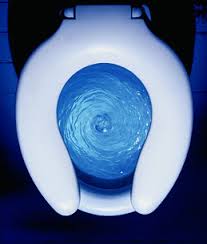How to Check for a Toilet Leak: A Comprehensive Guide
Are you experiencing a sudden increase in your water bill or hearing an odd hissing sound coming from your bathroom? If so, you might have a toilet leak on your hands. A toilet leak is not only wasteful but can also lead to water damage if left untreated. In this guide, we’ll walk you through the steps on how to check for a toilet leak and address any potential plumber issues.

Understanding the Importance of Detecting Toilet Leaks
Before plumbers Bristol dive into the practical steps of detecting a toilet leak, it’s essential to grasp the significance of this issue. Detecting and fixing a toilet leak can help you:
- Save money on your water bill.
- Prevent water damage to your home.
- Contribute to water conservation efforts.
Step 1: Gather Your Tools
To begin your investigation, you’ll need a few basic tools:
- A flashlight
- Food coloring (optional)
- A wrench
Step 2: Check for External Leaks
Start by inspecting the external areas of your toilet for visible leaks. Look closely at:
The Base
Check around the base of the toilet for any signs of water. If you notice moisture or water pooling, it’s a clear indicator of a leak.
The Supply Line
Examine the supply line, which connects your toilet to the water supply. Look for any drips or puddles near the connection points.
The Tank
Inspect the tank for any cracks, condensation, or water seepage. A cracked tank can be a common source of leaks.
Step 3: Conduct the Dye Test
A dye test is an effective way to detect internal toilet leaks. Here’s how to do it:
- Remove the tank lid.
- Add a few drops of food coloring to the tank water.
- Wait for about 15 minutes without flushing.
If you notice colored water in the toilet bowl, you have a leak in the flapper valve. This valve controls the release of water from the tank into the bowl.
Step 4: Inspect the Flapper Valve
To fix a leaking flapper valve:
- Turn off the water supply to the toilet.
- Drain the tank by flushing.
- Disconnect the old flapper valve and replace it with a new one.
- Turn the water supply back on and check for leaks.
Step 5: Check the Overflow Tube
An overflowing toilet can also indicate a leak. Ensure the water level in the tank is about an inch below the overflow tube’s top. Adjust the float if necessary.
Step 6: Test the Fill Valve
Sometimes, a malfunctioning fill valve can cause continuous water flow into the tank. To test it:
- Flush the toilet.
- Listen for any hissing or running water.
- If you hear these sounds, the fill valve may need adjustment or replacement.
In conclusion, detecting and addressing a toilet leak is crucial for both your wallet and the environment. By following the steps outlined in this guide, you can identify and resolve toilet leaks promptly, ensuring efficient water usage and preventing potential damage to your home.
5 Unique FAQs
Q1: Can a toilet leak lead to mold growth in my bathroom?
Yes, prolonged leaks can create a conducive environment for mold growth. It’s essential to address leaks promptly to prevent this issue.
Q2: Is it possible to repair a leaking toilet on my own?
Yes, many toilet leaks can be fixed as DIY projects. However, if you’re unsure or the problem persists, it’s best to consult a professional plumber.
Q3: How can I prevent future toilet leaks?
Regular maintenance, such as checking for loose connections and worn-out parts, can help prevent toilet leaks.
Q4: Are toilet leaks covered by homeowners’ insurance?
It depends on your policy. Some homeowners’ insurance policies may cover water damage resulting from toilet leaks, but it’s essential to review your policy to know for sure.
Q5: Can a leaking toilet increase my water bill significantly?
Yes, a toilet leak can lead to a substantial increase in your water bill if left unattended. Addressing the issue promptly can save you money in the long run.
Now you have a comprehensive guide on how to check for a toilet leak and take the necessary steps to address it. By following these guidelines, you can save money, conserve water, and maintain a leak-free bathroom. Don’t wait; take action today to ensure a more efficient and eco-friendly toilet system.
